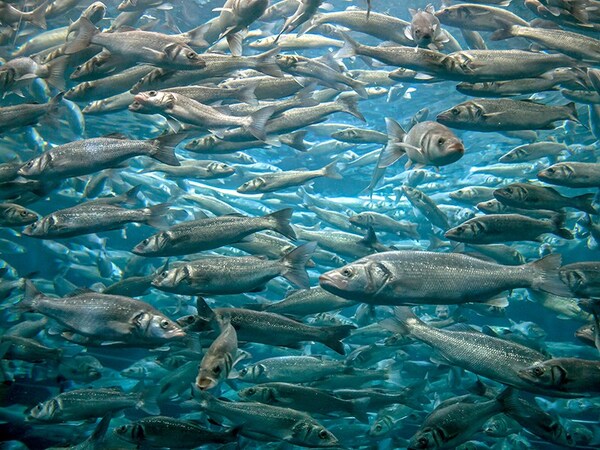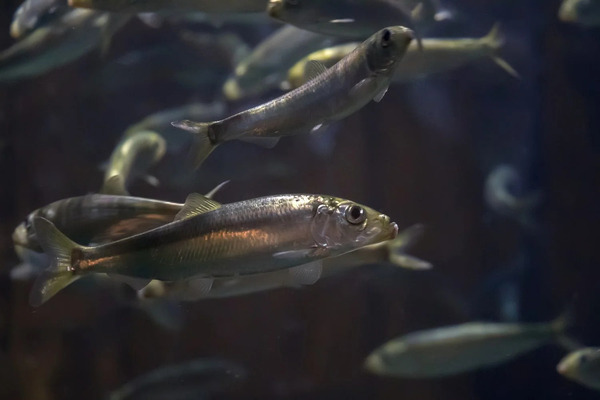Pacific herring, a small but important fish in the ocean, plays a vital role in the marine ecosystem. Found primarily in the coastal waters of the Pacific Ocean, these little fish are not only crucial to the health of the ocean but also serve as a major food source for a wide range of animals. So, what animals eat Pacific herring, and how does this fish fit into the larger ocean food chain?
In this article, we’ll explore the predators of Pacific herring, from the smallest seabirds to the largest marine mammals. By the end, you’ll have a deeper understanding of how these small fish contribute to the survival of many marine species.

Pacific herring, scientifically known as Clupea pallasii, are small schooling fish that thrive in the cold waters of the Pacific Ocean. They are an essential link in the marine food chain, acting as a primary food source for many animals, including fish, seabirds, and marine mammals.
Because of their abundance and nutritional value, herring are often referred to as a “keystone species” in the marine ecosystem. They provide food for a wide range of predators, making them an essential component in maintaining the balance of the ocean food web.
So, what exactly are the animals that eat Pacific herring? Let’s dive into the list of predators that rely on herring as a food source.
Fish are among the most common predators of Pacific herring. Many species of fish, both large and small, feed on herring. These include:
Salmon: One of the most well-known predators of Pacific herring is the salmon. As herring are abundant in the Pacific Ocean, salmon often rely on them as a major food source during their migrations.
Cod: Pacific cod are another predator of herring. They hunt herring in the cold, deep waters where both species are commonly found.
Halibut: Halibut, a large flatfish, are also known to consume herring. They tend to hunt herring near the ocean floor where the fish swim in schools.
Tuna: Large predators like tuna will eat herring when they are part of a large school. Tuna are powerful swimmers and are capable of chasing down schools of herring.
Seabirds are among the most visible predators of herring, especially when these fish come to the surface to spawn. Some of the seabirds that feed on herring include:
Seagulls: Common seagulls are opportunistic feeders that are known to dive for herring. They often take advantage of herring schools near the surface or after spawning.
Cormorants: Cormorants, large diving birds, are skilled at catching fish underwater. They often dive for herring in coastal waters where the fish are plentiful.
Pelicans: Pelicans are also known to feed on herring, especially in coastal areas where schools of herring gather near the surface.
Albatross: These large seabirds will also eat herring when available, particularly during their long oceanic journeys.
Marine mammals, particularly those in cold waters, are major consumers of herring. These mammals depend on fish like herring for nutrition and energy. Some of the marine mammals that eat Pacific herring include:
Seals: Seals, especially harbor seals and elephant seals, are common predators of herring. These animals are excellent divers and will hunt herring in the water, often waiting for the fish to swim by in schools.
Sea Lions: Like seals, sea lions also feed on herring. They are highly skilled hunters and are known for their agility in the water, allowing them to catch herring with ease.
Whales: Certain species of whales, such as humpback whales and orcas (killer whales), feed on herring. Orcas are particularly adept at hunting herring, often using teamwork to herd the fish into tight groups for easier feeding.
dolphins.html">Dolphins: dolphins.html">Dolphins are also known to feed on herring. In particular, they target herring during the fish’s spawning season when they gather in large schools.
Apart from the typical fish, seabirds, and marine mammals, there are other animals that will feed on herring in specific circumstances. These include:
Sharks: Some species of sharks, including the great white shark, may feed on herring, especially when they encounter large schools of the fish.
Otters: Otters are known to eat a variety of fish, and herring is no exception. They are excellent hunters and can be seen hunting for fish in shallow waters.
Crabs and Lobsters: While not the primary predators, crabs and lobsters have been known to scavenge on dead or injured herring.

Pacific herring are an essential part of the food chain because of their abundance and nutritional value. They are rich in omega-3 fatty acids, which are vital for the health of many predators. Additionally, herring are relatively easy to catch, as they often travel in large schools, making them a convenient food source for a variety of animals.
For marine mammals like seals, sea lions, and whales, herring are a crucial part of their diet, especially during specific seasons when herring spawn in massive numbers. For seabirds, herring is an easy meal, often located in shallow waters where they can dive for the fish with minimal effort.
Herring’s role in the ecosystem extends beyond being a food source for other animals. By feeding on plankton, herring help regulate plankton populations, which in turn influences the larger food chain. Herring also play a significant role in nutrient cycling in the ocean, as their eggs provide food for smaller marine life.
Moreover, herring are a key species in maintaining the populations of many predators. Without herring, animals such as salmon, seals, and seabirds would have to turn to other sources of food, which may not be as readily available or as nutritious.
Pacific herring are much more than just small fish swimming in schools. They are a cornerstone of the marine food chain, providing sustenance for a wide variety of animals, from fish and seabirds to marine mammals. Whether you’re interested in the predators of herring, the role they play in the ocean ecosystem, or their connection to other marine species, one thing is clear: these small fish are a vital part of life in the Pacific Ocean.
If you’re ever lucky enough to witness a herring school or see one of the many animals that rely on them for food, you’ll get a glimpse of just how interconnected the natural world really is. Keep an eye out for these remarkable fish and the animals that depend on them!
animal tags: Pacific-Herring
We created this article in conjunction with AI technology, then made sure it was fact-checked and edited by a Animals Top editor.